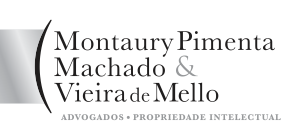Rodrigo Klein and Rodrigo Moraes Costa of Montaury Pimenta Machado & Vieira de Mello review the BPTO’s Management Report and the new Strategic Plan to provide insight into the plans to practically support the protection of IP in Brazil.
With the 2018-2022 cycle coming to an end, the Brazilian Patents and Trademarks Office (BPTO) published two reports: the BPTO Management Report, which discloses the results for the said period, especially for the year 2022, and its new Strategic Plan for the period of 2023-2026, which is based on guaranteeing and improving the quality of the BPTO.
At the beginning of its Management Report, the BPTO presents us with an overview of the origin of patent assignees in Brazil: the USA leads, representing 28.6% of assignees, followed by national assignees, which represent a slice of 24.8% of all assignees. China closes the podium, with 6.0% of assignees. Among these national assignees, it should be noted that Individuals represent 43.4%, while Legal Entities represent 22.5% of assignees living in Brazil. Teaching and Research Institutions and the Government account for 16.8%. This data can be better visualized in Figures 1 & 2.
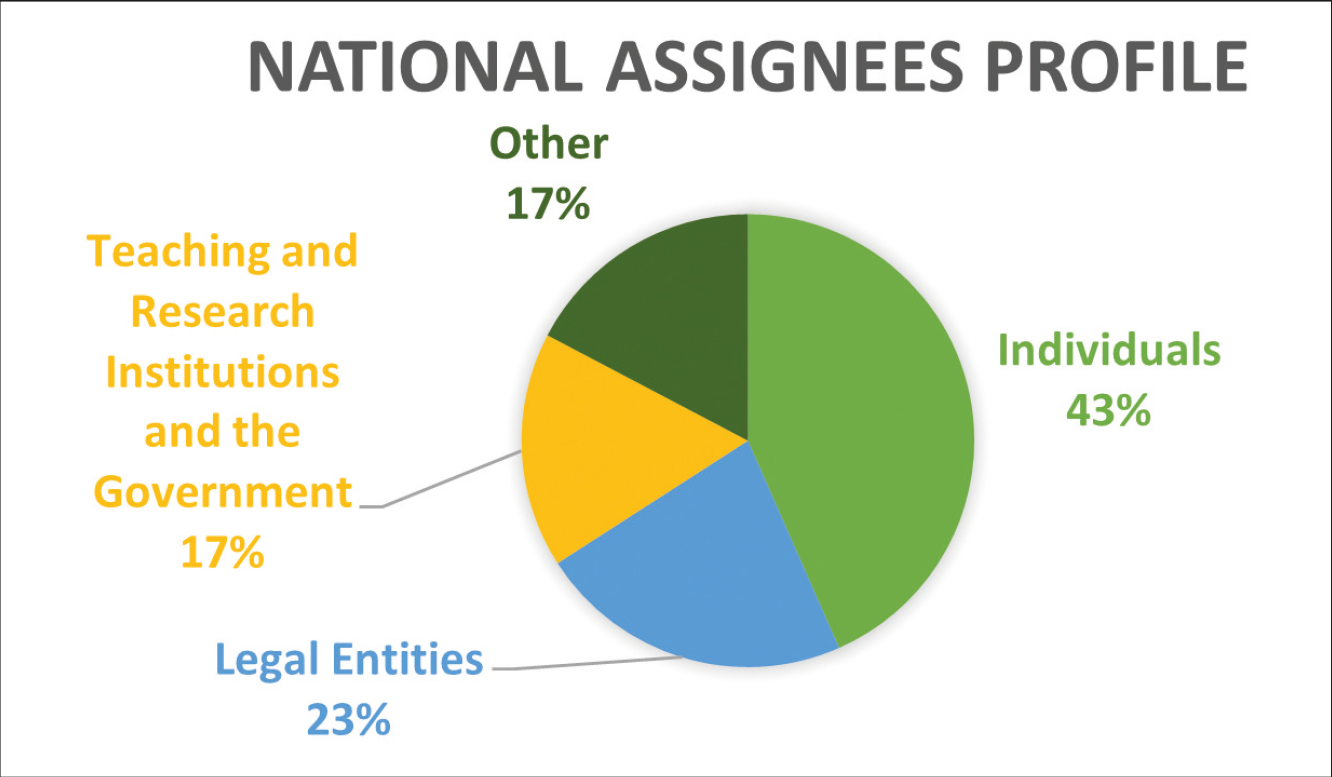
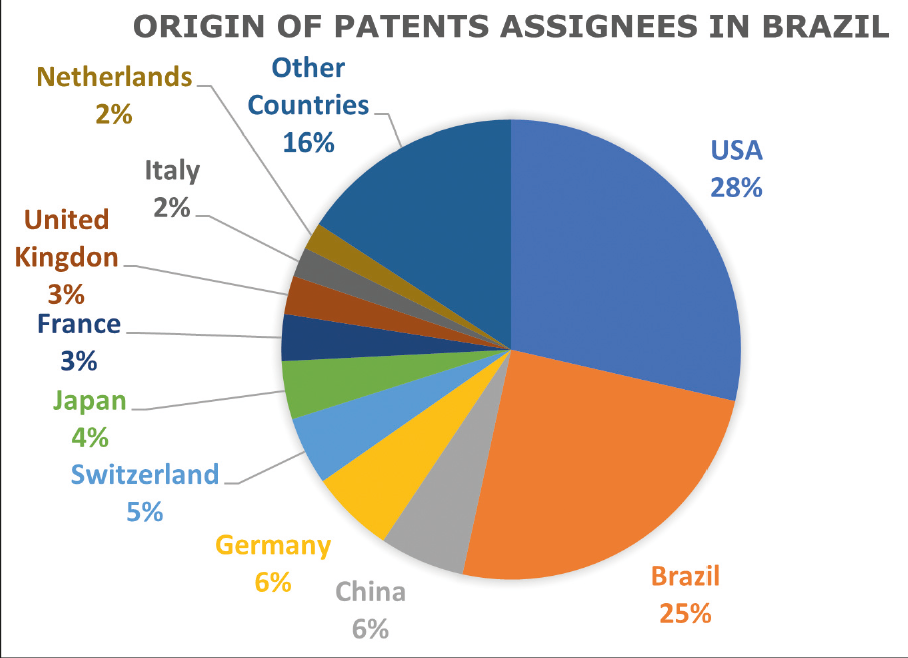
For 2022, the BPTO had established growth goals for filings, compared to filings made in the previous year. For Patent Applications, the expected goal was to obtain 11% growth compared to 2021. For Industrial Designs, the BPTO has set a target of 10% in filing growth.
Regarding the growth goal for Industrial Design filings, the BPTO disclosed in its report that the growth compared to 2021 was only 7%, therefore below the established objective.
Regarding the growth goal for Patent Application filings, the BPTO did not clearly disclose what was the growth compared to 2021. However, the data disclosed shows that 27,139 patent applications were filed in 2022. When compared to the 26,921 applications filed in 2021, there is a certain stability in the number of patent applications filed, with a growth of less than 1%, very far, therefore, from the established goal. Figure 3 summarizes this data.
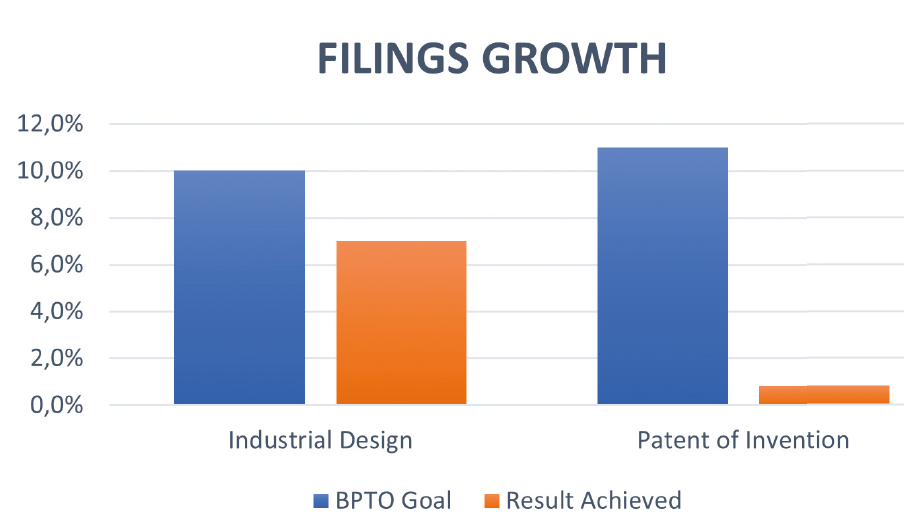
In addition to these growth objectives, the BPTO has also set goals to improve efficiency in examining IP applications. Such goals include reducing the time to obtain a decision for both patent applications and industrial designs and improving the time to obtain a decision for requests for priority examination of patents (including applications participating in the Patent Prosecution Highway - PPH program: the result of partnerships between the BPTO and several patent offices around the world).
In this sense, the BPTO aimed to obtain decisions on industrial design applications within a period of four months, while decisions on patent applications should occur within a period of 3.8 years. Furthermore, requests for priority examination were to be decided within 11 months.
Among the results disclosed by the BPTO, the reduction in decision time for technical examination of both patent and industrial design applications stands out: a reduction of 22% and 8%, respectively. As a result, a patent application currently takes an average of 6.9 years for its final decision, while an industrial design application takes an average of 3.7 months.
The BPTO also announced a 9% reduction in decision time for priority patent examination requests. Thus, an application for priority patent examination takes an average of 8.2 months to be granted. These results are summarized in Figure 4.
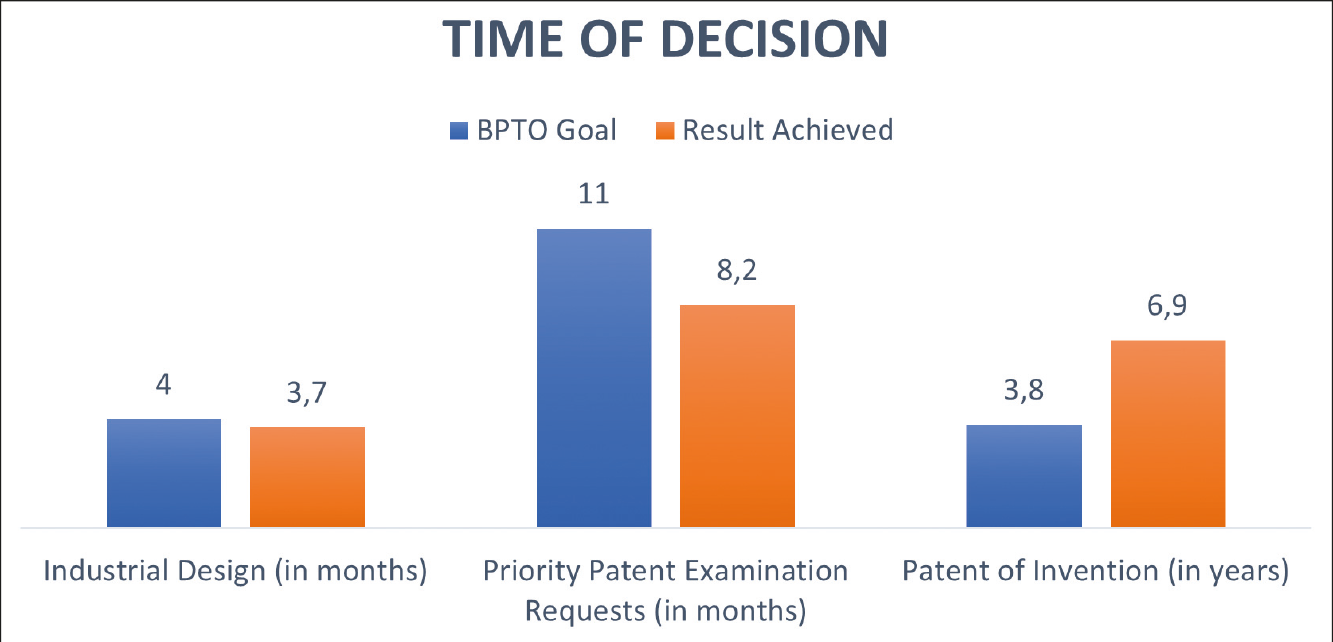
Among the types of priority procedures for patents, the PPH program stands out. In 2022, the BPTO increased the number of vacancies for requests participating in the program by 50%, with an average decision time was 7.2 months counted from the granting of prioritization.
In addition to the results presented above, the BPTO also continued the plan to combat the patent backlog. In 2019, the combat plan was made official, after being tested as a pilot project. According to the BPTO, since 2019, there has been a 92% reduction in the patent backlog, which has contributed to reducing the decision time for pending patent applications at the BPTO.
New goals for the 2023-2026 term
Following the release of the 2022 results, the BPTO disclosed the new Strategic Plan for the 2023-2026 term. This Strategic Plan is based on nine points, named strategic goals, which direct the decision-making to reach the established goals. Said nine points are as follows:
- Optimizing quality and celerity in the grant and registration of industrial property rights, reaching internationally referenced performance standards;
- Promoting the culture and the strategic use of industrial property for Brazil’s competitiveness, innovation and development;
- Consolidating Brazil’s insertion as a protagonist in the international industrial property system;
- Elevating the BPTO’s knowledge and value recognition to society;
- Deepening digital transformation focusing on the improvement of performance and user services;
- Guaranteeing the sustainable financing to modernize and expand the capacity of service provision;
- Guaranteeing the recomposition and retention of the workforce scaled to supply an increasing demand and sustaining the high performance in the service provision;
- Providing economic, efficient, and sustainable logistical and infrastructure support;
- Improving governance, management, and institutional relationship practices.
When it comes to patents and industrial designs, the Strategic Plan aims to reduce the elapsed time until a decision during technical examination. As concerns patent applications, a reduction from 6.9 years to two years, counted from the filing date to a final decision of an application, is desired. With respect to industrial design registration applications, a more moderate reduction from 3.7 to 3.5 months is intended.
In addition to time goals, the Strategic Plan also proposes, within the above-mentioned nine strategic goals, a so-called project portfolio that was formulated as actions to reach said goals.
With further respect to patents and industrial designs, actions to automate their processing flows are proposed by replacing the tools currently used with new tools, as well as by simplifying the workflows.
The optimization of patent searches is also proposed by outsourcing them to other societal elements, such as universities. The use of artificial intelligence-based tools is likewise pointed out as a resource to assist patent searches.
Furthermore, actions to optimize the patent database are presented by scanning the document files and correcting potential errors and inconsistencies, besides updating information in accordance with the Worldwide Intellectual Property Organization (WIPO) standards. In connection with this, a new resource for searching information is proposed.
In line with quality improvement, the Strategic Plan establishes the development of an automated system to review the quality and conformity of the examination of patent and industrial design registration applications, as well as a research project, directed at external users, related to the perception of the examination quality. The improvement of second instance procedures is also included in the Strategic Plan in order to enhance the quality of appeals and administrative nullity procedures, thus further ensuring their predictability and legal certainty.
In order to strengthen Brazil’s international presence in the intellectual property system, the Strategic Plan aims to standardize and enlarge existing fast-tracking procedures in patent prosecution, such as the PPH program.
Particularly in Asia, the BPTO currently has PPH agreements with China, Japan, Singapore, and South Korea. With respect to industrial designs, the Strategic Plan lays out the operational aspects of the Hague Agreement, which comprises several contracting parties throughout Asia and came into force in Brazil in August 2023.
All of the above goals and projects are deeply related to the provision of new job positions within the BPTO. In this regard, the Strategic Plan proposes holding an exam to select new employees for the public service, aiming to fill 120 positions.
The 2023-2026 Strategic Plan is an indication that the BPTO is attempting to keep on acting to improve and consolidate the national industrial property system taking into account its reality, focusing on the publication and transparency of its actions, and enhancing the experience for both its users and itself.





